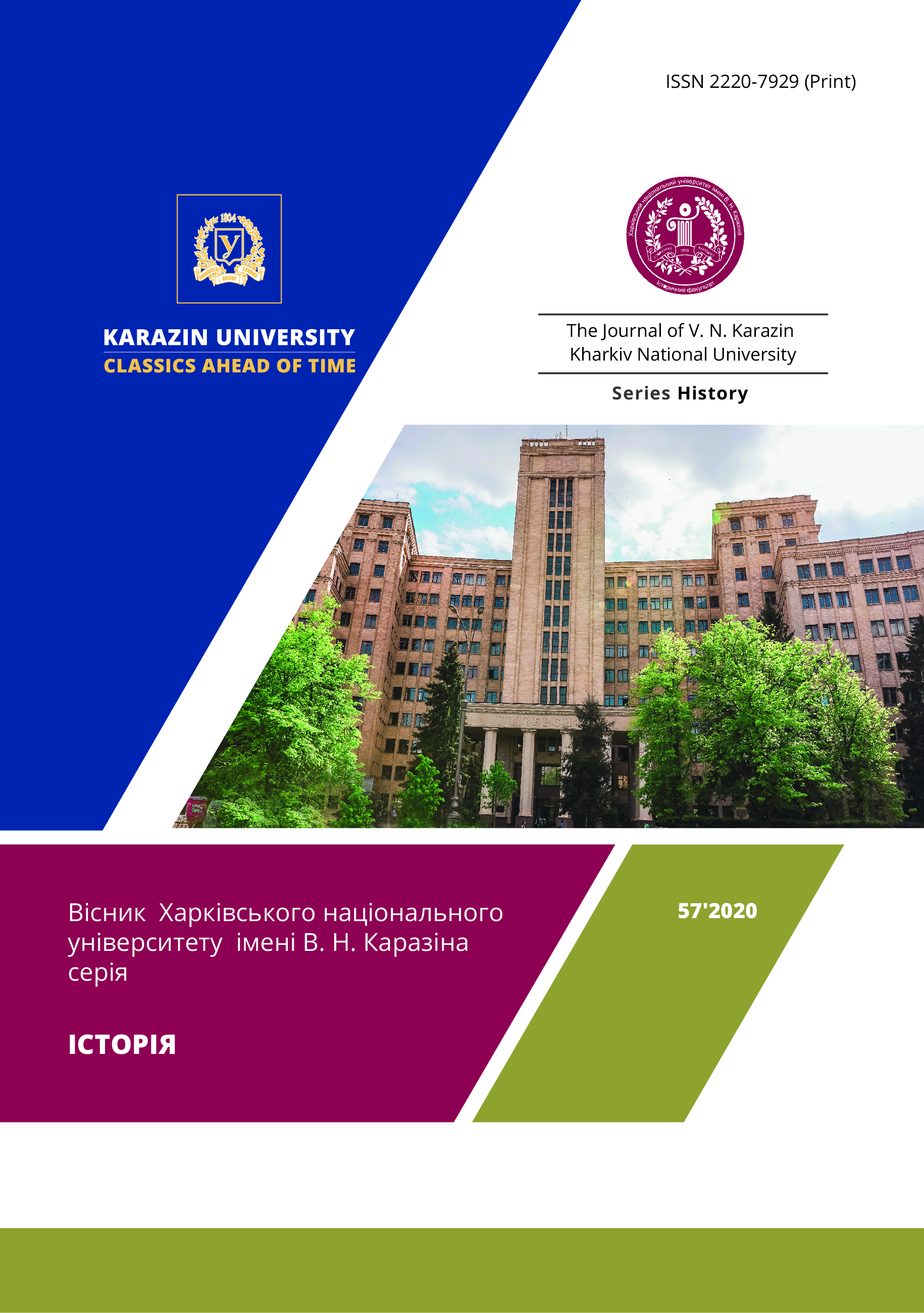The Beginning of the Kharkiv Pantheon Formation (on the Materials of Travel Guides of the Second Half of the 19th – Early 20th Centuries)
Abstract
The author explores the issue of forming the "pantheon" of the most prominent figures in the history of Kharkiv. To this end, Soviet city guides were analyzed. The names found on the guide pages have been recorded in the appropriate database. The author stated the principles of construction of this database and possible interpretations of the obtained results. It contains two fields - "faces" and "mentions". In the first box, those names found on the guide pages were recorded, and in the second box, those ratings that accompany a specific name were recorded. Along with fixing a person's name, a social or professional characteristic (scientist, military, architect, statesman, etc.) was also mentioned. In the "mention" field, depending on the nature of the mention of a person, a coefficient was stated: if the name was mentioned without a rating, it is a factor # 1 (1 point), a combination with such epithets as "known", "prominent" and the like – a factor # 2 (2 points), more or less a detailed characteristic of the activity, first of all from the point of view of impact on the development of the city – factor # 3 (3 points). As a result, it allowed to create a certain hierarchical name system and to separate "TOP-10" of them. In the long run, it will allow you to see a system of names in the dynamics, when some persons will fall out of the list of leaders at certain periods and others will be included in this list. It will also be important to capture changes in terms of increasing or decreasing attention to a particular category of people (social and professional characteristics). In total, more than 650 people were included in the database. The author concluded that in the early 20th century the guides less mentioned statesmen and local administrators, and more of artists, architects, and scientists. Also, the article states that in the late 19th and early 20th centuries the list of "local heroes" in Kharkiv has just begun to form. This can be explained by the absence of some known persons in the TOP-10 list. This is partly due to the fact that the guide genre itself has not yet been completed, and the first guides rather resembled information directories and were thematically imbalanced. Nevertheless, this material can be used in studying the initial stage of assembly of the "Kharkiv Pantheon".
Downloads
References
Диса, K. Образ модерного міста у путівниках по Києву межі ХІХ-ХХ ст. В зб.: Живучи в модерному місті. Київ кінця ХІХ – середини ХХ століть. Київ, 2016, с. 82-95.
Екатеринослав и Харьков: иллюстрированный путеводитель (репринтное издание 2008 г.). Харьков, 1905.
Г. Сковорода стал победителем проекта «Главные харьковчане – звезды Слобожанщины». Status Quo. Available at:
Гусев, А. Н. Харьков: его прошлое и настоящее в рисунках и описаниях: Историко-справочный путеводитель (репринтное издание 2008 г.). Харьков, 1902.
Харьков: путеводитель для туристов и экскурсантов (репринтное издание 2007 г.). Харьков, 1915.
Киселева, Л., Пильд, Л., Степанищева, Т. Некоторые итоги «Путеводительного проекта». В сб.: Travel Guide as a Semiotic Object. Tartu, 2008, c. 7-14.
Posokhov, S. I., Rachkov, Ye. S. Kharkiv as a University City: the Evolution of Symbolic Space. East/West: Journal of Ukrainian Studies, vol. VII, no. 1, 2020, pp. 129-67.
Репина, Л. П. «Вызов и ответ»: перспективы исторической науки в начале нового тысячелетия. Ейдос. Альманах теорії та історії історичної науки, вип. 3, 2008, c. 11-25.
Розанова, Ю. Н. Путеводитель как жанр туристического дискурса: диахронический аспект. Историческая и социально-образовательная мысль, № 5 (27), 2014, c. 281-85.
Склокіна, І. Путівники як джерело. Available at:
Устинов, И. А. Описание г. Харькова: путеводитель (репринтное издание 2007 г.). Харьков, 1881.
Copyright (c) 2020 Posokhov S. I.

This work is licensed under a Creative Commons Attribution 4.0 International License.
Authors who publish with this journal agree to the following terms:
- Authors retain copyright and grant the journal right of first publication with the work simultaneously licensed under a Creative Commons Attribution License that allows others to share the work with an acknowledgement of the work's authorship and initial publication in this journal.
- Authors are able to enter into separate, additional contractual arrangements for the non-exclusive distribution of the journal's published version of the work (e.g., post it to an institutional repository or publish it in a book), with an acknowledgement of its initial publication in this journal.
- Authors are permitted and encouraged to post their work online (e.g., in institutional repositories or on their website) prior to and during the submission process, as it can lead to productive exchanges, as well as earlier and greater citation of published work (See The Effect of Open Access).




